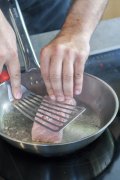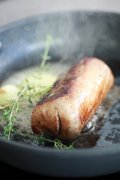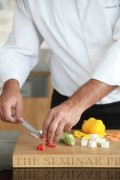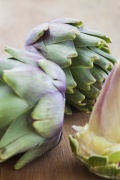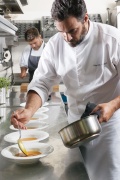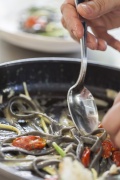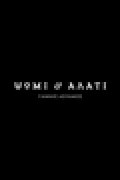 TIPS
TIPS
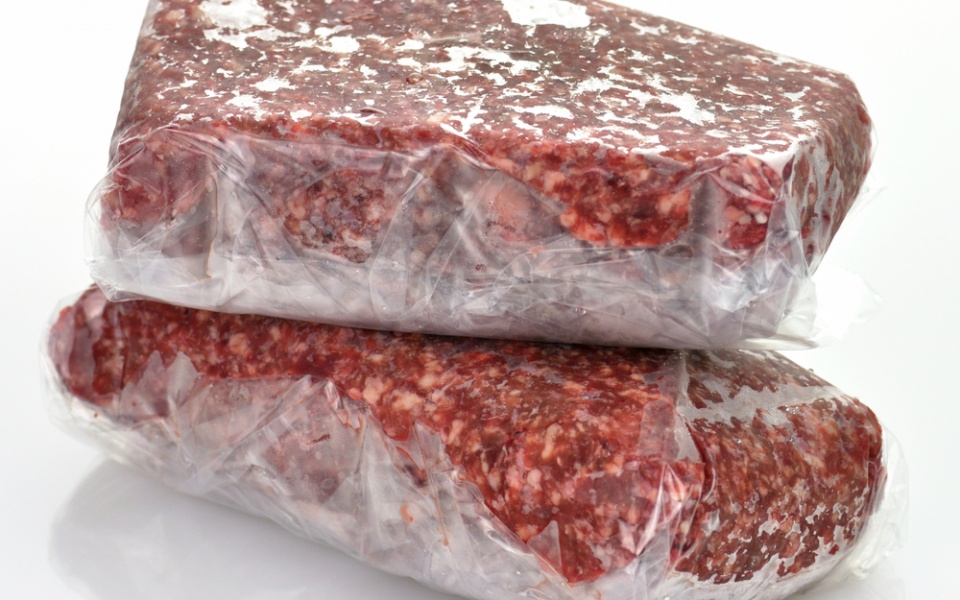
The freezer is a very important and useful tool in the kitchen. The notion that freezing is a bad practice which undermines food quality is incorrect. If we freeze the right foods in the right way, they will maintain their quality which will remain, if not entirely, then almost unchanged. It is important to know which types of food can be frozen in order to be stored correctly and be tasty after thawing.
Foods which can be frozen are divided into 3 main categories: raw, i.e., our raw materials such as beef or broccoli, partially cooked food, such as a pie which is ready to bake or burgers ready for grilling, and cooked food, such as braised veal or pastitsio.
Raw ingredients suitable for freezing
Below is the freezing suitability of various ingredients.
Cured meats
Most cured meats can easily be stored in the freezer. Bacon, prosciutto, siglino, sausages are some examples.
Eggs
Eggs can be frozen after being beaten.
Meat – poultry
All meat and poultry are suitable for freezing. Offal, where present, must be removed, packaged and frozen separately.
Nuts
It is a good idea to freeze nuts because they remain fresh.
Cheeses
Cheeses can be stored in the freezer but I do not think there is any particular reason for this.
Fruit and vegetables
Because of their high water content, fruit and vegetables are not ideal for freezing. If you wish to freeze fruit of vegetables it is best to process them first in some way, i.e., make a strawberry puree or cook mushrooms.
Fish and seafood
Most fish and seafood can be frozen with decent results but inevitably will suffer greater loss of quality than other food groups such as meats for example. Therefore, freezing of fish and seafood should be scarce.
Partially cooked food suitable for freezing
Some times it is quite useful to freeze a food at some stage of its preparation, usually just before the final cooking. Such foods, depending on their type, may have to be thawed before cooking (i.e., burgers), or can be cooked directly from the freezer (i.e., fresh pasta). Some partially cooked foods suitable for freezing are:
- Burgers and meatballs
- Pies, such as spinach and cheese pies (before baking)
- Pizzas
- Stuffed vine-leaves (dolmadakia)
- Biscuits or cookies
Cooked foods suitable for freezing
As a general rule one could say that foods more suitable for freezing are those which contain enough sauce or liquid to create a protective coating around the food and prevent it from drying out. Meat with tomato sauce, for example, is more suitable for freezing than a pot roast.
Cooked meat and poultry are quite resilient to freezing, irrespective of their preparation method. Cooked fish and vegetables can be frozen but they lose more of their quality than meat.
Below is a list of cooked foods which can be frozen with very good results:
- Warm sauces, such as tomato or mince meat sauce
- Soups
- Stocks
- Cooked meat and poultry
- Oven-baked pasta, such as lasagna or pastitsio
How to tell if a frozen food has deteriorated
It isn’t easy to tell if a food has deteriorated while in the freezer because there may not be any visible evidence of its deterioration. The best way to protect against deterioration is to freeze food that is fresh, ensuring the freezer is set at the right temperature and not keep food in the freezer for too long.
In every case, it is important not to use a frozen food if, during thawing, you notice that:
- It smells strange
- Its color and appearance have deteriorated
- It shows signs of ‘burn’ marks on its surface cause by the low temperature.
How to prepare food before placing it in the freezer
When it comes to freezing food, the type of container used is very important. What we must keep in mind is that the container used must be as airtight as possible. Exposure to air during freezing causes the food to lose its quality. For the best preparation of foods for freezing, the best container to use is a vacuum-sealed plastic bag, like the ones used for commercial cured meat or cheese packaging. AVacuum packaging may not be easy to achieve in the home kitchen, but an air-tight food bag is not hard to find. It is good practice to place a sticker on the bag which lists its content and freezing date. It will be easier to find what you’re looking for and to know when you must consume it by. It is also a good idea, after filling the bag and removing the air, to freeze it placed flat in a tin so that it takes up less space. The use of a freezer bag also offers the advantage of thawing the food quickly under running water. You can also use containers such as Tupperware or even cling film. It is best to avoid glass, which can easily cause accidents and, while it is possible to freeze ovenproof dishes, I don’t think there is any reason these should be tied up in the freezer unless we are talking about pre-prepared foods that will be cooked in that particular dish, such as pastitsio, for example. When freezing foods such as burgers it is a good idea to use baking paper between the layers so that they do not stick. When packaging a food for freezing, it is useful to think of the quantity you will need when thawing and prepare appropriate ‘packages’ to achieve better food management.

